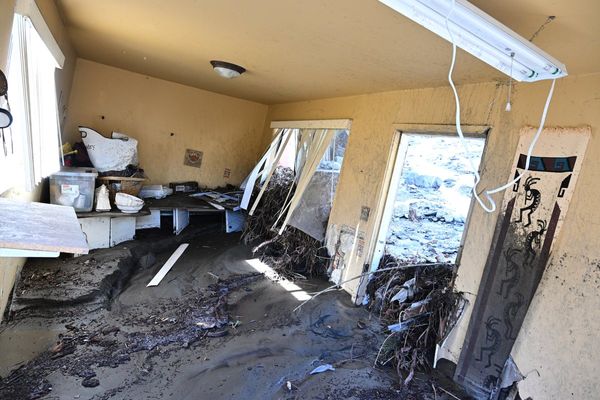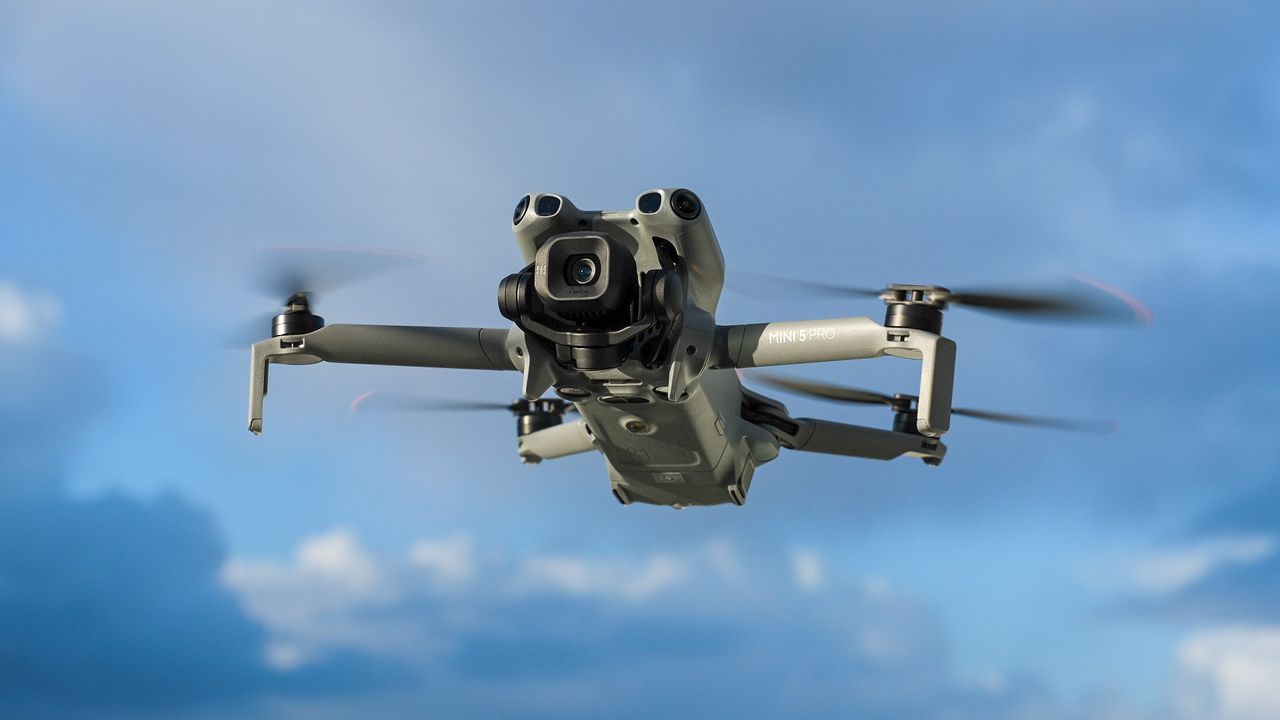
DJI shows no sign of slowing down lately. It feels like the brand is releasing a new drone (and action camera, robot mop, and gimbal) every week. The company’s latest model, the Mini 5 Pro, stirred quite a few emotions online because of weight variances that push the drone out of the sub-250g category.
I’ll discuss the question of weight below in detail, but aside from that, the Mini 5 Pro is an impressive upgrade over the DJI Mini 4 Pro, which was launched two years ago. It moves from a 1/1.3″ sensor to a 1-inch CMOS sensor capable of 50 MP stills, improving low-light performance and dynamic range.
The Mini 5 Pro also adds new obstacle-sensing hardware – including front-facing LiDAR – and upgraded motors and aerodynamics for better wind resistance and flight stability. On the video side, it extends capabilities to 4K/120 fps (and FHD up to 240 fps), while introducing a 225° gimbal roll for true vertical-format shooting and a “Med-Tele” digital crop mode.
Is it worth the upgrade, though, or are you better off keeping an eye out for Mini 4 Pro deals? Is the Mini 5 Pro the best drone for hobbyists, or should they go with a different option? I flew the Mini 5 Pro for the last two weeks, and here’s my verdict.
DJI Mini 5 Pro review
Price and availability
The DJI Mini 5 Pro is available now in the UK and across most of Europe, with pricing that reflects its new position as a premium compact drone. In the UK, the standard model starts at £689, while the Fly More Combo with the RC 2 controller and additional batteries costs around £979. These bundles are widely stocked through major retailers and DJI’s official store.
Across Europe, pricing follows a similar pattern, starting at around €799 for the base drone and roughly €1,129 for the Fly More Combo. Availability is strong in most EU markets, with both configurations shipping now.
In Australia, the Mini 5 Pro starts at approximately AU$1,119, positioning it as one of the most feature-rich drones in its weight class. The Fly More Combo typically retails for around AU$1,549, depending on stock and regional tax differences.
The situation in the United States is less straightforward. At the time of writing, DJI has not officially launched the Mini 5 Pro in the US, and units currently available there come via authorised resellers and importers. That means pricing may fluctuate above international averages, and stock levels remain limited.
Is the DJI Mini 5 Pro a sub-250g drone?
Whether the Mini 5 Pro classifies as a sub-250g drone depends on who you ask. DJI says on its website that the drone weighs 249.9g, which puts it very close to the limit set by most authorities for hobbyist drones. The EU also agrees that the Mini 5 Pro is a small drone, thanks to its approach to allow for +/- 3% manufacturing deviation in weight.
However, the aviation authorities in the UK and the US don’t automatically accept DJI’s 249.9 g marketing claim. This means that if they check your Mini 5 Pro while you’re flying and it weighs more than 250g, you could get in trouble if you don’t have the appropriate certifications.
My test unit came in at 252.2g, which means it is over the limit, and therefore, I need my Operator ID displayed on the drone and can’t fly it over “uninvolved people.” That’s on top of the tight regulations drone pilots enjoy in the UK!
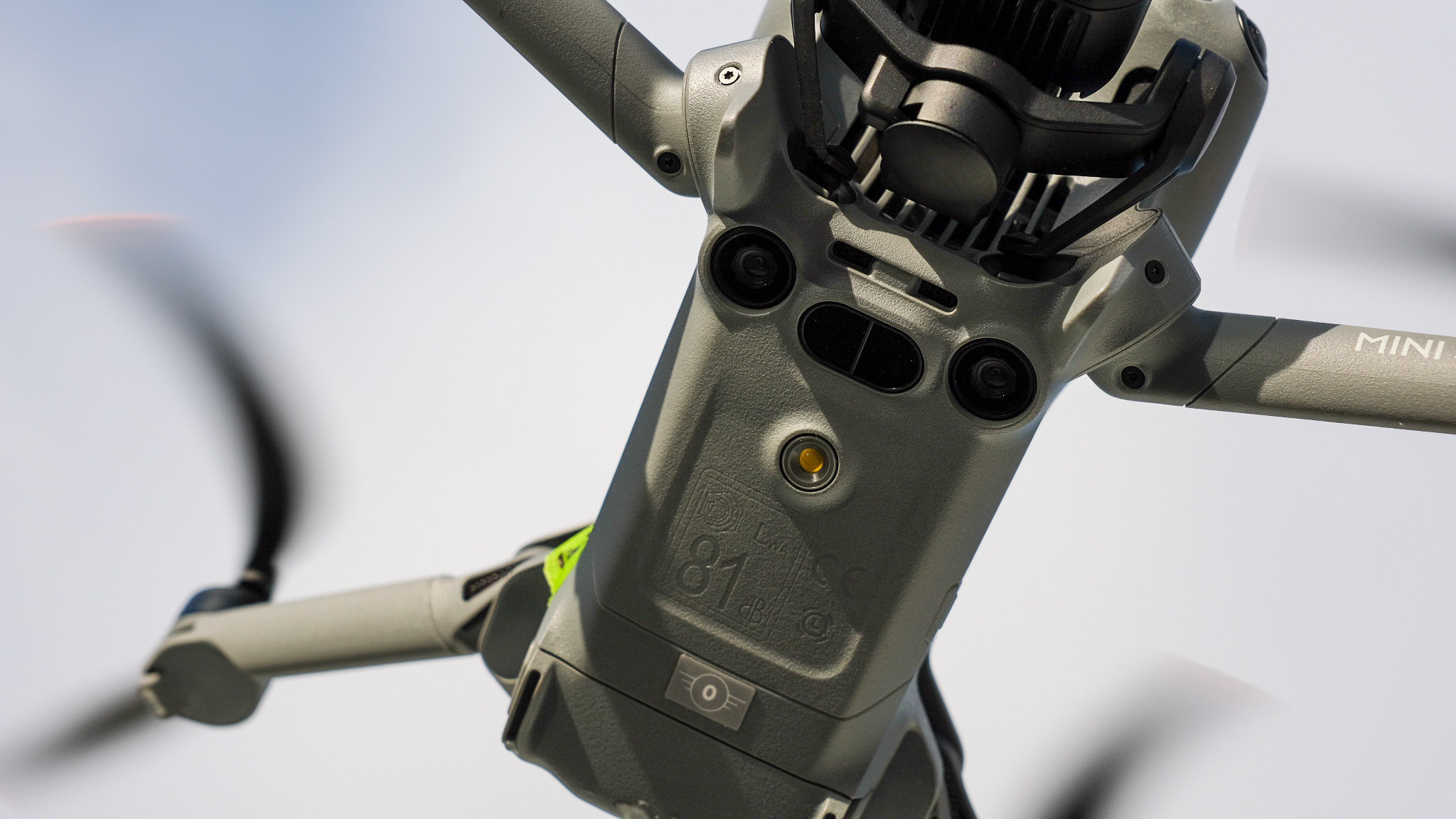
Now, this wouldn’t be a major issue, but historically, the whole point of the Mini series was to offer pro-level features in a sub-250g package. The Mini 5 Pro breaks this tradition, making it harder to recommend the model to hobbyists. Due to the weight increase, the drone is better suited for prosumers who can’t quite stretch their budget to buy a Mavic.
I tend to side with the EU on this matter, as I don’t think a 252g drone with advanced obstacle sensing can do a lot more damage than a sub-250g model (which are usually around 249g anyway). Equally, allowing deviations from the target weight can be a slippery slope from a legislative perspective.
I appreciate that it must be incredibly difficult to design a tiny drone with pro-level features, but I wish DJI had waited a bit longer so the Mini 5 Pro would fall under the 250g weight limit. It’s not like any other companies are even remotely close to challenging the brand’s dominance in the drone market.
Design and build quality
The DJI Mini 5 Pro keeps the signature foldable-arm design that’s defined the Mini series since the beginning, but this time it feels far more refined. Folded, the drone measures 157 x 95 x 68 mm (without propellers), and extends to 304 x 380 x 91 mm when unfolded . The overall silhouette remains compact and portable, yet everything from the finishes to the gimbal mount has been subtly re-engineered to look and feel more premium.
DJI has tightened tolerances throughout: the propeller arms now lock with a more solid click, the body panels feel sturdier, and the ventilation system has been redesigned to improve cooling during extended flights.

The gimbal housing is larger and sturdier to accommodate the new 1-inch sensor, and the landing setup has been simplified with forward legs only, giving the drone a more aerodynamic stance.
The drone feels quiet, stable, and able to hold position confidently even in blustery conditions. Improvements to the motors and aerodynamics give it stronger wind resistance, while the overall construction feels less plasticky than before.
DJI has also added practical touches such as 42 GB of built-in storage, letting users capture footage even without a microSD card.
Camera performance
For the first time in the Mini lineup, DJI has fitted a large 1-inch CMOS sensor capable of producing 50 MP stills and capturing 4K video at up to 120 fps. Combined with a bright f/1.8 aperture and 10-bit colour depth, this delivers professional-grade image quality that rivals much larger drones.
Dynamic range is excellent, particularly in D-Log M mode, allowing the Mini 5 Pro to handle bright skies and shadow detail exceptionally well. The 1-inch sensor offers noticeably improved low-light performance compared to the Mini 4 Pro, producing cleaner night shots with less noise and more accurate colour. Even in tricky lighting conditions, such as dusk, urban night scenes, or high-contrast landscapes, the Mini 5 Pro maintains impressive tonal balance.
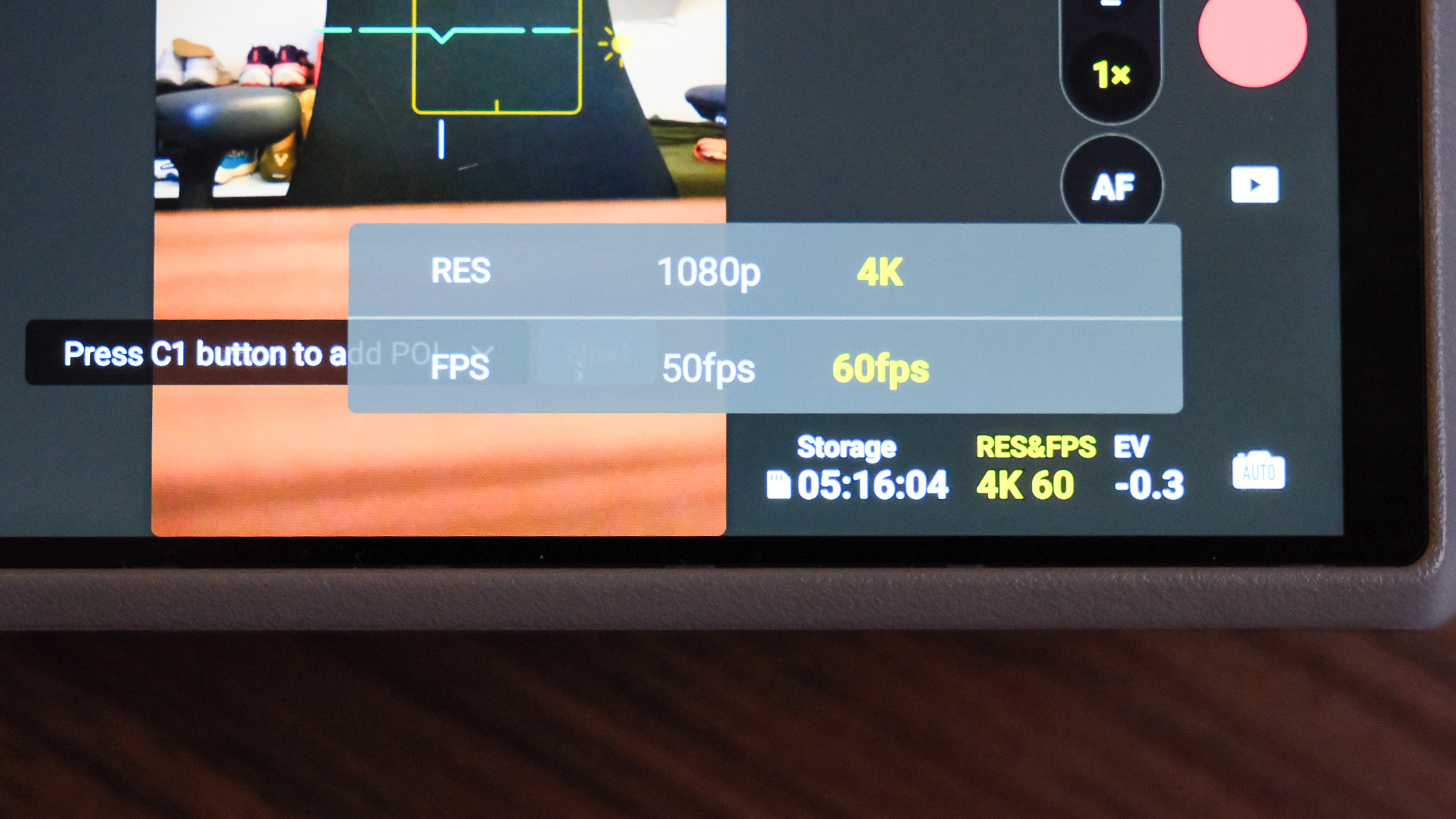
The drone supports 4K HDR at up to 60 fps and full-HD slow motion at up to 240 fps. The footage looks crisp and cinematic, with smooth motion and natural-looking contrast.
The new 225° gimbal roll range enables true vertical shooting, ideal for social content, while the “Med-Tele” 48 mm mode provides a mid-range digital zoom without significant loss of detail.
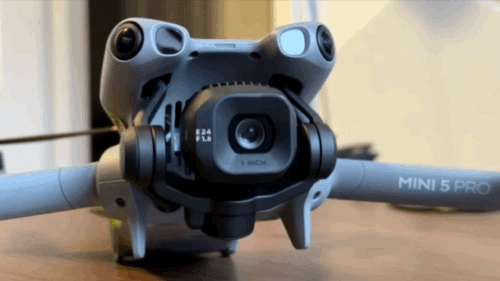
Stills are sharp and richly detailed, with enough resolution to crop heavily without visible degradation. The camera can also shoot RAW photos for more flexible post-processing.
If there’s a downside, it’s that the higher resolution and bit depth make files larger, so you’ll need fast cards and decent post-production hardware. However, you do get more built-in storage and an option to expand it using Micro SD cards, so there is that.
Flight performance
Flight performance has always been a strength of DJI’s Mini range, and the Mini 5 Pro continues that tradition while adding a level of refinement that feels close to the Air 3.
The drone can reach speeds of up to 18 m/s (up 2 m/s from the Mini 4 Pro) in Sport Mode and ascend at up to 10 m/s, with wind resistance rated at up to 12 m/s. In testing, it remains impressively steady even in gusty conditions (it’s always windy down by the coast where I live), maintaining smooth footage without noticeable drift.
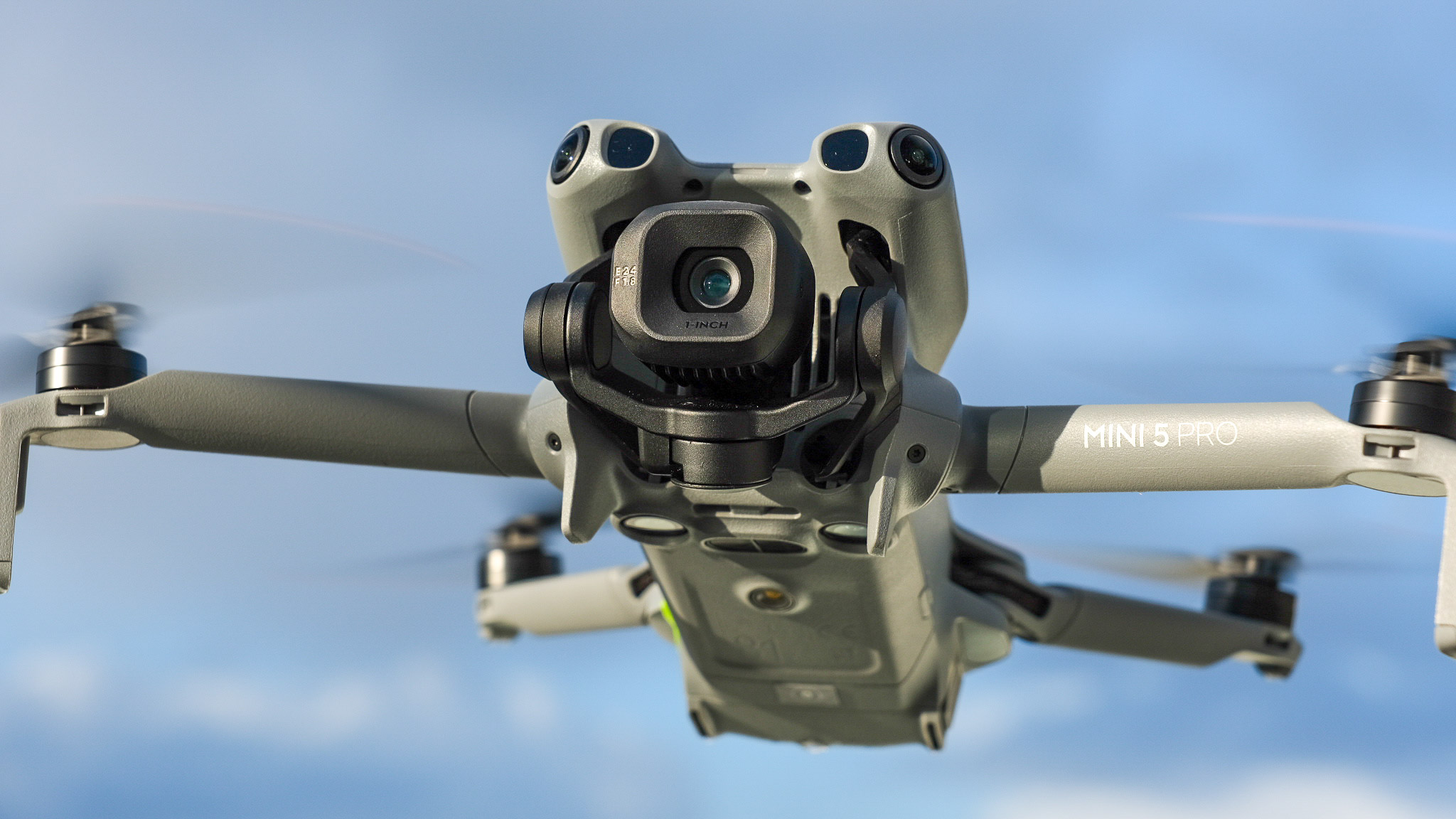
The Mini 5 Pro includes the full suite of DJI’s intelligent flight modes. FocusTrack combines ActiveTrack, Point of Interest, and Spotlight, enabling the drone to follow moving subjects automatically while maintaining composition.
MasterShots and QuickShots simplify cinematic movements, creating automated clips like Dronie, Helix, and Rocket with minimal input. Of course, most of these can also be found in cheaper DJI drones, such as the DJI Neo and DJI Flip, so it’s not a huge surprise that the Mini 5 Pro has these, too.
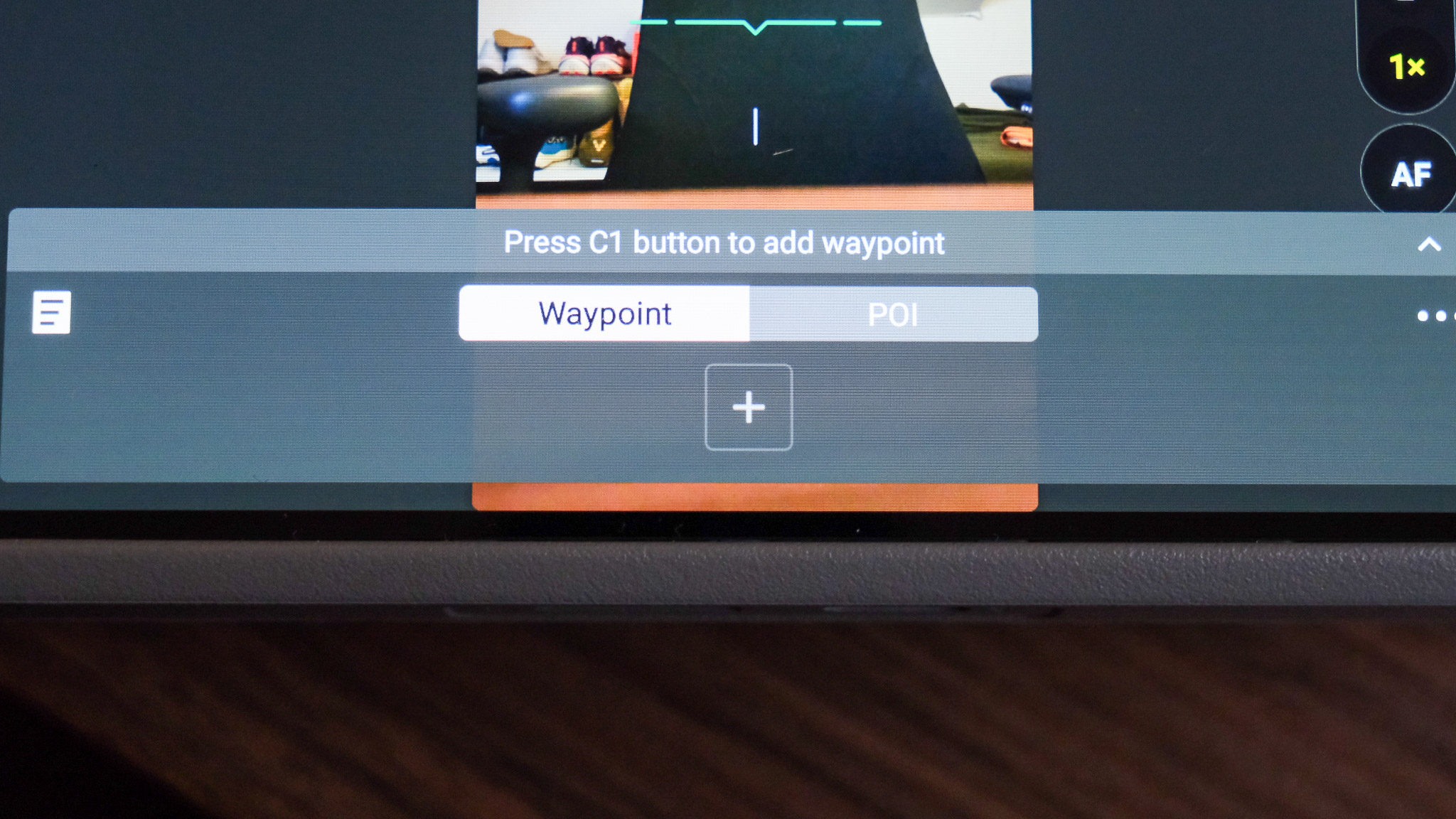
Waypoint Flight, a feature once reserved for larger drones, including the DJI Mavic 4 Pro, enables programmable routes and repeatable camera paths, a huge plus for creators who need consistent shots over time. This feature already appeared on smaller drones, such as the Air 3, so it makes sense for the Mini series to get it as well.
Omnidirectional obstacle sensing, backed by LiDAR and advanced processing, enhances safety and precision. Return-to-Home is reliable even in areas with limited GPS, and the overall responsiveness of the controls feels snappier than before. The combination of advanced tracking, automated cinematic modes, and improved obstacle avoidance means it’s easier than ever to capture complex shots solo.
In the air, the Mini 5 Pro feels agile yet confident, straddling the line between beginner-friendly and professional-grade. The flight controls are precise, braking is smooth, and hover stability is excellent.
Battery life and charging
Battery performance is a major strength of the DJI Mini 5 Pro, and it’s one of the areas where DJI has pushed the limits of what a compact drone can do. The standard Intelligent Flight Battery is rated for up to 36 minutes of flight in ideal conditions (vs 34 minutes on the Mini 4 Pro), while the optional Battery Plus extends that to a claimed 52 minutes. Those figures are optimistic, but they show how far the brand has come in making long-endurance flight possible in a small form factor.
In real-world use, flight time naturally depends on how you fly. Recording 4K video, battling headwinds, or climbing aggressively will all drain the battery faster. On average, you get 25-30 minutes of usable flight time with the standard pack, which still puts the Mini 5 Pro ahead of most sub-500 g drones. With the Battery Plus, you can realistically expect 35 to 45 minutes, depending on weather and flight profile.
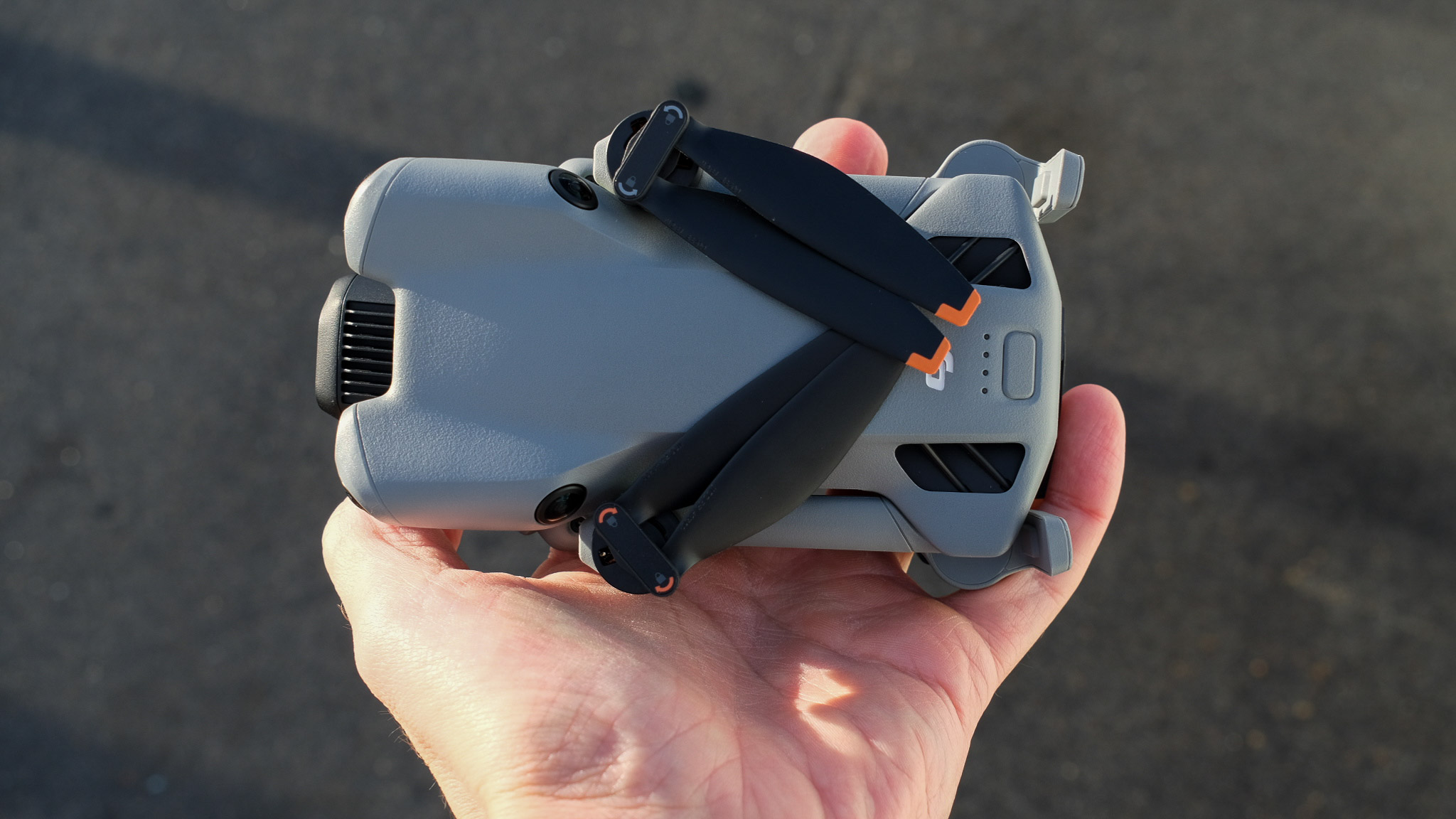
The standard battery has a capacity of 2,788 mAh, while the Battery Plus ups that to 4,680 mAh. The increase doesn’t just extend flight time; it also provides more consistent power delivery, particularly useful for high-performance filming modes or in colder environments where smaller packs often struggle.
However, the larger battery pushes the take-off weight well above 250 grams. The standard battery (Intelligent Flight Battery) weighs approximately 71.2 g, while the extended battery (Intelligent Flight Battery Plus) weighs approximately 117 g. So, switching from the standard to the Plus battery adds roughly 45.8 g of weight to the drone’s take-off weight.
Charging has been streamlined. Using DJI’s official 18 W charger, a single battery takes roughly an hour and twenty minutes to top up. The optional two-way charging hub can power multiple batteries sequentially or serve as a power bank for other devices. The charging hub also automatically prioritises the battery with the most charge remaining, speeding up turnaround times between flights.
Verdict
The DJI Mini 5 Pro is the most capable “Mini” drone yet, bridging the gap between consumer-friendly portability and professional performance. Its 1-inch sensor produces stunning 4K footage with rich detail and impressive dynamic range, while new features like LiDAR obstacle sensing and Waypoint Flight bring big-drone intelligence to a compact form.

Flight stability, range, and battery life are all improved, making it an excellent creative tool for filmmakers and travellers alike. The only drawback is its weight; at over 250g for most units, it loses the carefree, regulation-light status that made the Mini series so appealing in the past.

